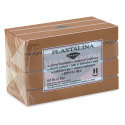Best Way To Fix Broken Ceramic
Ceramic objects are often treasured for their beauty and sentimental value. Unfortunately, accidents happen, and these delicate items can end up broken. However, all hope is not lost when it comes to broken ceramics.
With the right techniques and a bit of patience, you can restore your broken ceramic to its former glory. In this article, we will explore the best way to fix broken ceramic, covering everything from assessing the damage to preventing future breakage.
Understanding Broken Ceramic
Before diving into the repair process, it’s essential to understand the nature of broken ceramics. Ceramics are fragile and can break in various ways, including small chips, cracks, or complete breaks. The type and severity of the damage will determine the appropriate repair method.
Assessing the Damage
To fix broken ceramic effectively, you must assess the extent of the damage. Carefully examine the broken pieces, noting any missing fragments or areas with severe damage. This assessment will help you determine the best approach for repair and whether professional help might be necessary.
Repairing Small Chips and Cracks
For minor chips and cracks, you can often perform the repairs at home. Start by cleaning the damaged area and applying an epoxy or super glue designed for ceramic repair. Carefully align the broken pieces and apply a small amount of glue to bond them together. Allow the adhesive to dry thoroughly before proceeding.
Reattaching Broken Pieces
When dealing with larger breaks, reattaching the broken pieces becomes more challenging. Begin by arranging the fragments in their original positions to ensure a proper fit. Apply a suitable adhesive to join the pieces, using clamps or tape to hold them in place while the glue dries. Be patient during this process to ensure a strong bond.
Filling and Sanding Larger Breaks
In cases where the broken ceramic has missing pieces or gaps, filling and sanding are necessary to achieve a seamless repair. Use a ceramic filler or putty to fill the gaps, carefully smoothing the surface. Once the filler is dry, sand the area gently to create an even surface that matches the surrounding ceramic.
Painting and Glazing the Repaired Area
To achieve a flawless finish, it’s important to paint and glaze the repaired area to match the original ceramic. Choose a paint color that closely matches the ceramic’s hue and apply it carefully to the repaired section. Once the paint is dry, apply a ceramic glaze to protect the area and provide a glossy finish.
Preventing Future Damage
After repairing your broken ceramic, taking preventive measures can help avoid future damage. Place fragile ceramics in safe locations, away from high-traffic areas or areas prone to accidents. Use padding or protective materials when storing or moving ceramics to minimize the risk of breakage.
Cleaning and Maintaining Ceramic
Regular cleaning and maintenance play a significant role in preserving the beauty and longevity of ceramics. Use gentle cleaning solutions and avoid harsh chemicals that may damage the ceramic surface. Handle ceramics with care when cleaning, ensuring a firm grip to prevent accidental slips and drops.
Seeking Professional Help
While many minor repairs can be done at home, some complex or valuable ceramics may require professional assistance. If you’re unsure about your ability to fix the broken ceramic or if it holds significant value, it’s wise to consult a professional restorer. They have the expertise and tools to handle delicate repairs and ensure the best possible outcome.
FAQs
Can I repair a ceramic piece that has multiple missing fragments?
Yes, you can repair a ceramic piece with multiple missing fragments. However, it might require more advanced techniques and the assistance of a professional restorer.
What type of glue should I use for repairing ceramics?
It’s best to use epoxy or super glue specifically designed for ceramic repairs. These adhesives provide a strong bond and are suitable for various types of ceramics.
Can I use regular paint to touch up the repaired area?
While regular paint may work in some cases, it’s recommended to use paint designed for ceramics. Ceramic paint adheres better and offers a more durable finish.
How can I prevent future damage to my ceramics?
To prevent future damage, keep fragile ceramics in safe locations, use padding when storing or moving them, and handle them with care during cleaning and maintenance.
When should I seek professional help for repairing ceramics?
If you’re unsure about your ability to repair the ceramic or if it holds significant value, it’s best to consult a professional restorer. They have the expertise and tools to handle delicate repairs effectively.
Conclusion
Fixing broken ceramics is a meticulous process that requires patience and attention to detail. By following the steps outlined in this article, you can restore your cherished ceramic items and enjoy them for years to come. Remember to assess the damage, choose the appropriate repair method, and take preventive measures to avoid future breakage. With the right approach, you can bring your broken ceramic back to life.





